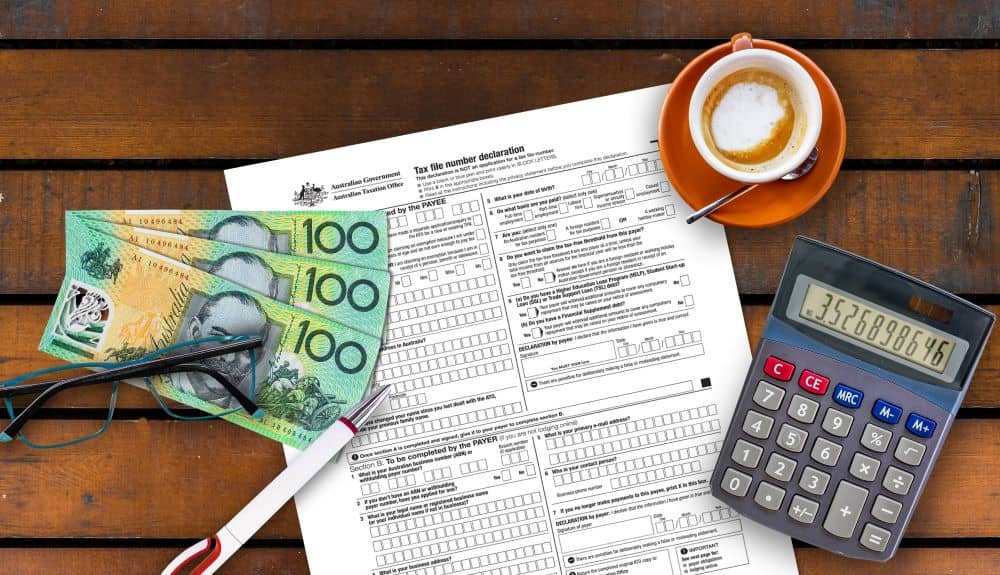[Updated April 09, 2023]
This January, the Australian government confirmed their changes to Stage Three Tax Cuts, with a focus on expanding benefits for lower and middle income workers.
But with all the updates, what are the revisions to the stage 3 tax cuts and what do these changes mean?
In this simple guide, I’ll explain the stage 3 tax cuts, the most recent updates to the stage 3 tax cuts, and what these changes will mean for you come tax time.
Quick Summary:
- The Australian government confirmed updates to the stage 3 tax cuts in January
- The revisions to the stage 3 tax cuts are intended to help lower and middle income earners have less taxes withheld from their tax home pay
- Tax returns for 2023/24 will not be affected by the revised stage 3 tax cuts
- Revisions to the stage 3 tax cuts include dropping from 19% to 16% tax rate for the $18,201 to $45,000 tax bracket
- The threshold for the 32.5% tax bracket will be increased to $135,000 but the tax rate will drop from 32.5% to 30%
- Taxpayers earning over $190,000 will be charged a 45% tax rate (down from the $200,000 threshold)
- The revised stage 3 tax cuts will go into effect 1 July 2024
- The stage 3 tax cuts should automatically be reflected on your paychecks once the revisions take effect in July
What Are the Stage 3 Tax Cuts?
The stage 3 tax cuts are part of the Australian government’s income tax package. The goal is to benefit lower and middle income earners by decreasing the amount of tax that is withheld from their tax home pay. Translation: more money in your pocket each week.
Updated Stage 3 Tax Cut/Tax Table
Original Stage Three Tax Brackets
| Income Range | Tax Rate |
|---|---|
| Up to $18,200 | No tax |
| $18,201 to $45,000 | 19% |
| $45,001 to $200,000 | 30% |
| Above $200,000 | 45% |
Here are the Revised Stage 3 Tax Brackets:
| Income Range | Tax Rate |
|---|---|
| Up to $18,200 | No Tax |
| $18,201 to $45,000 | 16% |
| $45,001 to $135,000 | 30% |
| $135,001 to $190,000 | 37% |
| Above $190,000 | 45% |
Why Was the Stage 3 Tax Cut Introduced?
The stage three tax cuts were introduced as part of the Australian government’s 2018 tax package. The objective was to update threshold brackets to reflect inflation.
What Were the Three Phases?
Stage 1
Stage one of the three phases was a temporary tax offset. Called LMITO (low and middle income tax offset), it provided taxpayers in the $30,000 to $126,000 tax bracket a break up to $1,080. This tax offset stopped in June 2022.
Stage 2
Stage two two changed the 32.5% tax bracket. Formerly applied to the $45,001 to $120,000 range, stage two changed it from $37,001 to $90,000. This revision took effect in July 2020.
Original Stage 3
The Stage 3 tax cuts were originally created to get rid of the $37% marginal tax bracket, in addition to lowering the 32.5% marginal tax rate to 30%. It was also set to raise the threshold for the 45% marginal tax up to $200,000 (up from $180,000). This would mean that all taxpayers earning between $45,000 and $200,000 would be responsible for paying the 30% tax rate.
 Changes to the Stage 3 Tax Cuts from 2022/2023 to 2024
Changes to the Stage 3 Tax Cuts from 2022/2023 to 2024
The original stage 3 tax cuts would have benefited workers earning over $120,000.
Compared to the original stage 3 tax cuts, the revised tax cuts were designed to provide more relief to lower and middle income earners. The tax-free threshold will remain the same at $18,200.
Here are the revisions to the stage 3 tax cuts from 2022/2023 to 2024:
- Taxpayers earning between $18,201 and $45,000 will have their tax rate cut from 19 percent to 16 percent
- The threshold for the current 32.5% tax bracket will increase from $120,000 to $135,000.
- The tax rate for $45,001 to $135,000 will drop from 32.5% to 30%.
- Rather than completely getting rid of the 37% tax bracket as originally proposed in the stage 3 tax cuts, the government will keep it. The threshold for the 37% tax bracket will include earners between $135,001 and $190,000.
- The highest income bracket will move down from $200,000 to $190,000. Taxpayers earning over $190,000 will sit in the 45% tax bracket.
What Do the Stage 3 Tax Cuts Mean for Different Income Earners?
Meet Sam:
- Annual Salary: $80,000
- Original Tax Cut Under the 2023-24 Stage 3 Tax Plan: $875
- Revised Stage 3 Tax Cut: $1,679
- Difference Under Revised tax cuts: $804
Meet Jill:
- Annual Salary: $200,000
- Original Tax Cut Under the 2023-24 Stage 3 Tax Plan: $9,075
- Revised Stage 3 Tax Cut: $4,529
- Difference Under Revised tax cut: -$4,546
How Will the New Tax Cuts Affect My Tax Return?
It is important to know that these state 3 tax cuts will have zero effects on your 2023-2024 tax return. These most recent updates do not take effect until July 2024. This means the stage 3 tax cut changes will not affect your tax return until the 2024-2025 financial year.
When these revisions do take effect, lower to middle income earners should see less taxes withheld out of their weekly paychecks. This means more money in your pocket!
Earners in the highest tax bracket (over $190,000) will likely see a lower tax return than they are used to.
Examples of How This Could Affect You
Once it does take effect, the updated tax rate will be automatically applied by your employer. Depending on your tax bracket, this will translate to a slightly higher take-home salary beginning 1 July 2024.
FAQs
What were the stage two tax cuts?
Under the stage two tax cuts, the 32.5% tax bracket was changed to $45,0001 to $120,000 (up from $37,001 to $90,000). It took effect on 1 July 2020.
Who will benefit from stage 3 tax cuts?
Lower and middle income earners will likely see the most benefits from the stage 3 tax cuts. Some higher-income earners may benefit from the revised stage 3 tax cuts as well.
When will the stage 3 tax cuts take effect?
The stage 3 tax cuts are set to take effect on 1 July 2024.
What Happens Next After the Revised State 3 Tax Cuts?
The stage 3 tax cuts are set to go into effect on July 1, 2024. These revisions may leave you with more take home pay in your pockets, especially if you are a lower or middle income earner.
I know these tax cuts and revisions can be confusing to keep up with. If you have questions about the revised Stage 3 tax cuts, feel free to reach out to our team. We can help you navigate these changes and understand how they’ll affect you once they take effect in July 2024. Contact our friendly customer service team by emailing us at support@taxreturn.com.au, phoning 0499 829 829 (0499 TAX TAX), or filling out our online contact form.


